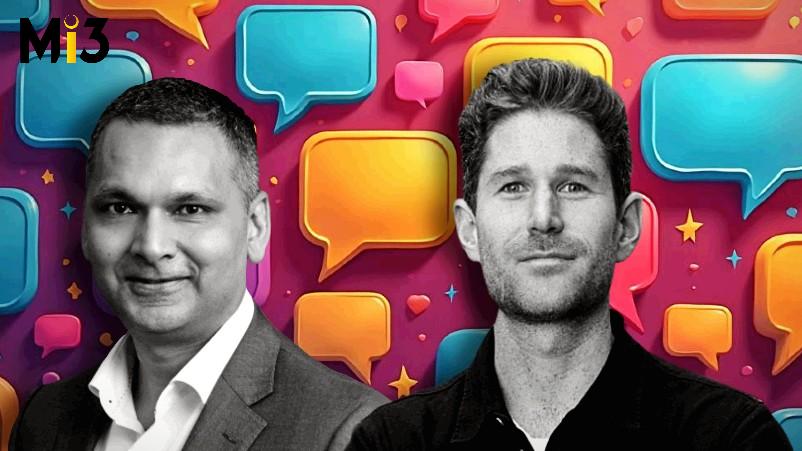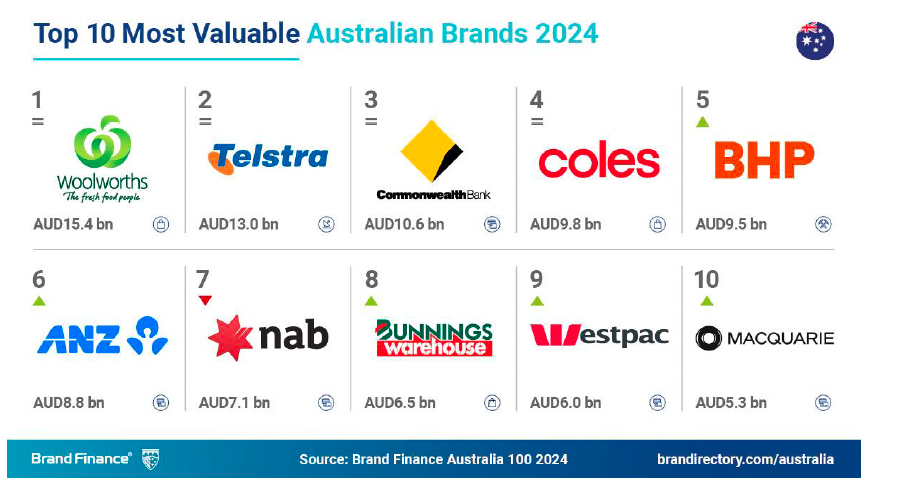‘Total reputation’: Patties Foods and TBWA shift search strategies for AI as retailers start vetting suppliers via LLMs – SEO, content and PR lines blur

What you need to know:
- Australian FMCG giant, Patties Food Group, has become one of the first clients to pilot TBWA’s AI search optimisation service, Rise.
- Figures suggest 10-20 per cent of search traffic across service-oriented brands is now coming via LLMs as people shift from Google – and even more for consumer brands.
- Per TBWA Melbourne Eleven EGM Kiefer Casamore: The value of SEO for some brands has already dropped 60 per cent month-on-month.
- Despite accelerating shifts, many marketers haven’t fully grasped the implications. Even with its wholehearted curiosity to bring AI in the mix, for example, the Patties team found insights shared by TBWAEleven “eye-opening”, prompting its marketing and growth chief, Anand Surujpal, to kick off an immediate pilot program to tackle brand visibility and reputation in the LLMs.
- The result was an earned/earned media optimisation program of work, heavily skewed to optimising content especially through earned channels and a rise in PR strategy.
- For Surujpal, LLM optimisation is fast becoming hygiene for marketing teams.
- While traditional SEO more commonly sat with the media team at Patties, he says it’s clearly also a PR strategy, given earned and reputation implications.
- The first cab off the rank? “We’ve got a plan being put together around we ensure our messaging with the right citations is well crafted for the top of funnel – so total reputation,” per Surujpal. “Brand comms is coming through in the back half of this fiscal year, so we’ve got that on the way too.”
Getting abreast of brand visibility, reputation and indexation via the LLMs – then optimising earned and owned media strategies to improve it – is now table stakes, Patties chief marketing and growth officer, Anand Surujpal believes.
The Australian FMCG giant, home to brands such as Four ‘N’ Twenty, Nanna’s, Lean Cuisine, Leggo’s and Patties, is one of the first clients to jump on-board TBWA’s new AI search optimisation tool, Rise. The brainchild of the agency’s chief AI and innovation officer, Lucio Ribeiro, the service-oriented product has been built to help clients audit, discover and remediate how their brands, products, companies and services show up in larger language models such as ChatGPT, Perplexity and Google’s AI Overviews.
“Say you’re looking to improve discoverability of the brand: These larger language models are not recommendation machines, they’re making a decision for you. Google would recommend 10 websites; LLMs come back and tell you what gym to go to, and to do what, or what food to eat together,” Ribeiro says.
While pretty much every agency is working towards a post-SEO era where consumers and customers are dependent on generative engine optimisation (GEO) and agent engine optimisation (AEO), Rise is one of the first local products to market (unveiled in June) – and now comes with client testimonials. In its first two months, Ribeiro was claiming half a dozen brands on-board to Mi3, from FMCG to wellness and automotive.
Rise was built firstly through a methodology and way to operate, then a workflow manual, then technology that helps brands improve their presence and visibility through the new platforms. Central to the offering is a database of questions and queries people are asking of the LLMs, as well as broader category and competitive insights.
Ribeiro’s right-hand man bringing Rise to market is TBWAMelbourne and Eleven executive general manager, Kiefer Casamore. He cites increased traffic from the LLMs sitting at 10 to 20 per cent on average for service-oriented companies right now, and even higher for product-based organisations.
Likewise, there’s been a sharp decline in both the volume of traffic and efficacy of traditional search. In one case, the value of SEO for a location-based pilates studio has already dropped 60 per cent month-on-month, per Casamore.
Lucio and Kiefer came along and said, hey, let me show you and chat with you about large language models [LLMs] and how the entire discovery search process is actually working. It was quite eye-opening. We didn't know what we didn't know in that space. We made a decision right then to understand how we were actually being portrayed in that space.
Patties CMO: You don’t know what you don’t know
Yet the stark reality of just how powerful the likes of chatGPT have become on brand discoverability and reputation are largely unknown in marketing teams – even those professing to be overtly AI curious. Surujpal says seeing the findings from Rise were “eye-opening”.
“I was driving us to be at the forefront of AI from a marketing point of view, and we have internally adopted ChatGPT Enterprise, brought in financial AI, we’ve got AI listening, AI insight generation. So all these component parts were starting to develop and be embedded organisationally,” Surujpal tells Mi3. “Then Lucio and Kiefer came along and said, hey, let me show you and chat with you about large language models [LLMs] and how the entire discovery search process is actually working. It was quite eye-opening. We didn’t know what we didn’t know in that space. We made a decision right then to understand how we were actually being portrayed in that space. And we’re in this entire journey right now of discovery, being guided by Lucio and Kiefer in terms of this new environment.
“We were already engaging with the subject. But we didn’t appreciate how other people were discovering us on the topic.”
Brand reputation first
Brand reputation is the obvious starting point. In Patties’ case, it’s firstly about brand visibility and consideration as it builds an international presence. Surujpal is overseeing international sales teams in Australia, the US, and Japan, managing key customer relationships, supply chain, operations, and driving double-digit international revenue growth as Patties builds out in nine countries. A breakout success has been in Japan, where Four’N Twenty is now available in over 3,000 stores across major retailers, including Aeon, Costco and 7-Eleven. More brands in the portfolio are be exported to more markets in 2026.
“While we’ve got a really credible, strong reputation and we’re largely understood in Australia and New Zealand, but when you go to Japan, Korea, Taiwan, Thailand, these people are searching for us on ChatGPT, trying to understand things like: Who are we? What do we do? Have we been established? Do we have credible brands? Who are the leaders in the organisation? We started to unpick those questions with the team, garnering statistics that worked with that as well, which really helped to shape our thinking as well,” says Surujpal.
That’s because research now suggests small to medium sized enterprises are using ChatGPT to develop business plans, Casamore reveals.
“If we think about a retail environment or businesses in those markets, they’re actually vetting suppliers through ChatGPT. So reputationally, how do they stack up from a sustainability perspective, who are their core executives? That became an interesting driver for us,” he says.
The response is largely an earned and owned media optimisation play. “The tool that is Rise, or the product, starts to look at a combination of reputation and citations – which is just a fancy way of saying where is the content being drawn from into large language models. Then, with a little bit of science, what are the critical must-win editorial publications we have to hit to drive reputation,” explains Casamore.
“For example, we know that Anand needs to be in Inside Retailer; that we need to make sure the brand is in a particular business publication if we’re trying to hit sustainability topics and the likes, and certainly international targets as well. It gives us a bit more direction and science.
“Then we can look at sentiment in real time: What are the things that are positively increasing indexation in ChatGPT, or what are the things that are dropping it down as well. It’s primary that combination to help with optimisation with the indexing and the platforms – I’d say 70 per cent earned media and 30 per cent owned content.”
For example, there has been a steady stream of changes at a content level, plus around how the team writes FAQs, listicles, blog posts.
“That’s the hygiene, if we think about website, LinkedIn and owned channels,” says Casamore. “There’s also myriad technical fixes we can do as well, including making sure that the website is actually able to be scraped by the bots.”
In some instances, we've seen one piece or article changed indexation overnight. We'll go, holy shit, we've got an article in Forbes, and that's helped. In other instances, we're having sustained content strategy over time, and it's taking much longer. What we're not able to do, because we don't have an understanding of how the machine works, is to know exactly this strategy and tactic that works every time. If we knew that, we'd be able to do it within a 24-hour cycle. So it’s a lot of testing, a lot of learning, and a bit of theory in there.
‘One article can change indexation overnight’
To gauge the Rise platform’s impact during this pilot and experimentation phase, the rudimentary scorecard metric is visibility.
“We will ask: What is the competitor set? That might be Simplot, Bega or the ones we want to benchmark against, then it’s a one to 10 ranking. That’s obviously based on our tech stack, and that does that real time. It’s based on thousands of in-feeds, pieces of data, and it replicates hundreds if not thousands of prompts of what we think an end user or consumer is likely to search,” explains Casamore. “What are the questions you’re likely to ask ChatGPT in the context of a Patties Food group? Then we’re able to see how you are appearing. When we were doing the work with Anand reputationally around the corporate positioning of Patties Group, we were really interested in the visibility of the executives. Are they seen? Is there a positive sentiment around them? Then the corporate side of the business more holistically.
“Where it gets really interesting is when we start to look at specifics on SKUs, product portfolios and how you are benchmarking… But the KPI marker is really looking how we have improved that [brand] visibility through the content strategy we’ve now implemented through owned and earned, and potentially some technical fixes, within three, six and 12 months. Are we seeing that indexation getting higher?
“In some instances, we’ve seen one piece or article changed indexation overnight. We’ll go, holy shit, we’ve got an article in Forbes, and that’s helped. In other instances, we’re having sustained content strategy over time, and it’s taking much longer. What we’re not able to do, because we don’t have an understanding of how the machine works, is to know exactly this strategy and tactic that works every time. If we knew that, we’d be able to do it within a 24-hour cycle. So it’s a lot of testing, a lot of learning, and a bit of theory in there. As we build more case studies in the space, we obviously get much sharper with what the strategy needs to be.
“But my response to any of our clients if they’re saying they need results quickly, or asking when will we get results is this: If you’re not playing, you won’t get any results. Can I guarantee it within a week? Probably not. Can we do it in three to six months? Potentially.”
Brand reputation and sentiment
For Surujpal, gathering insights on where the Patties brand sits in an AI world has been quite the conversation starter with the c-suite.
“To have insight into our key execs, where we sit in the category, our sentiment, visibility versus the total market set within the context of the freezer, or greater food, certainly helps us get a quite a different lens. And it’s a point in time – here’s where we are today,” he says. “I am actually reviewing this with our CEO, Paul [Hitchcock], just to see where we are, where we are going and what are we doing.”
Off the back of that are two ongoing streams of work. One is looking at what Patties does from an organisational point of view to leverage some of that organisational reputation understanding. The other stream is around specific brands, and Surujpal notes several brands such as Four ‘N’ Twenty, Lean Cuisine and Nanna’s filter into key sentiment and drive organisation metrics.
“In light of knowing that, some of the longer-term comms strategy, which for us has moved as much as 90 per cent into the digital space, means we’re really looking at digitalised spend. Again, to shape that with this framework in mind is going to be an interesting learning for us too,” says Surujpal.
“We do the standard equity tracking measures, shares, financials, ROI. This LLM measure is new, but again, given what we know of how people are using it, and then being able to track it and measure it, is going to be really interesting for us. So it’s not like I’m looking at a new dimension. I’m looking at this within the context of this fast-emerging universe where people are engaging and searching for us, and discovering us. But unvetted? Gosh. I would suggest to any marketer that it is certainly a tool you would have in your in your kit. It’s something we’re learning very quickly.”
In terms of wholesale change, Casamore sees a refocus back on a press office strategy. Longer term, there may also be insights that help inform strategy and product development.
“That could be one example in six months where you go, hey, we know that in parts of Korea, Japan, these flavour profiles might be of interest, so we would provide that recommendation,” he comments.
“I have to say, a very powerful product demonstration is to just sit down with a marketer and go, hey, chuck into chatGPT your brand, product or service? Is it in there? I know one of the largest electronic companies in the world recently launched a handset and for a number of weeks and months that didn’t appear in chatGPT. That was a real worry for that business… how do we ensure that the content we’re putting out is being fed into these machines?
“The other thing is we very much position this whole space within under the banner of CX. While the tactic is public relations and content strategy, the way you’re showing up is how someone feels and experiences the brand. It’s just in a new, emerging channel. That gets us out of that trap of SEO, because it’s inherently different.”
We do the standard equity tracking measures, shares, financials, ROI. This LLM measure is new, but given what we know of how people are using it, and then being able to track it and measure it, is going to be really interesting for us … I would suggest to any marketer that it is certainly a tool you would have in your in your kit. It’s something we're learning very quickly.
Rethinking owned and earned
All this means LLM optimisation is shaking up internal marketing team accountability. While traditional SEO more commonly sat with the media team at Patties, Surujpal sees it’s clearly also a PR strategy given earned and reputation implications.
“With this space, there’s the reality of how fast this moves as well, and how quickly the impact is seen – it literally can evolve overnight. It’s extraordinary. So it does need a bit of shaping, then having a PR lens to help to reshape the conversation,” he comments. “That reality is quite stark. You do need experts to think about this all the time. It’s not buying spots and dots, it’s a different headspace.”
And a critical one for Surujpal. “We have some loved heritage brands that are Australian favourites. We’ve got a great, honest, authentic, original story to tell. So from that point of view, when we’re around the world talking about this, people are going you better be there, right? You better be able to tell the truth of your story, and be able to communicate that,” he says.
Having done the analysis and brand reviews, Patties has internally aligned behind doing more in this space.
“We’ve got a plan being put together around we ensure our messaging with the right citations is well crafted for the top of funnel – so total reputation. Brand comms is coming through in the back half of this fiscal year, so we’ve got that on the way too.
“But we also often talk about the fact we’ve got to be ambitious. We’ve got to try it. You’ve got to fail fast and move… This is part of a total philosophy we’ve taken within marketing that says AI infusion is at the heart of what we’re doing right now, because of the speed it’s giving us, and the ability to synthesise. It doesn’t make the decision; we make the decision. But the cost it’s taking out of it, and listening that it allows us to do, I’d now consider these to be hygiene things in today’s world of marketing.
“The question is, how do you create a competitive advantage from that new playing field? Well, here’s a way that you can actually create a competitive advantage all over again.”
With gen Alpha expected to interface with virtual AI assistants, Casamore sees what Patties is doing is “preparing for that future”.
“That first-mover advantage is making sure how we appear there is clear and accurate, and certainly indexing higher than the competitive set if it’s a direct product or service comparison,” he says. “The adoption rates of ChatGPT certainly in the context of the Australian market is increasing at such a dramatic rate. What we’re trying to understand is how is that augmenting decision making across all touchstones of a day, B2B to B2C.”





